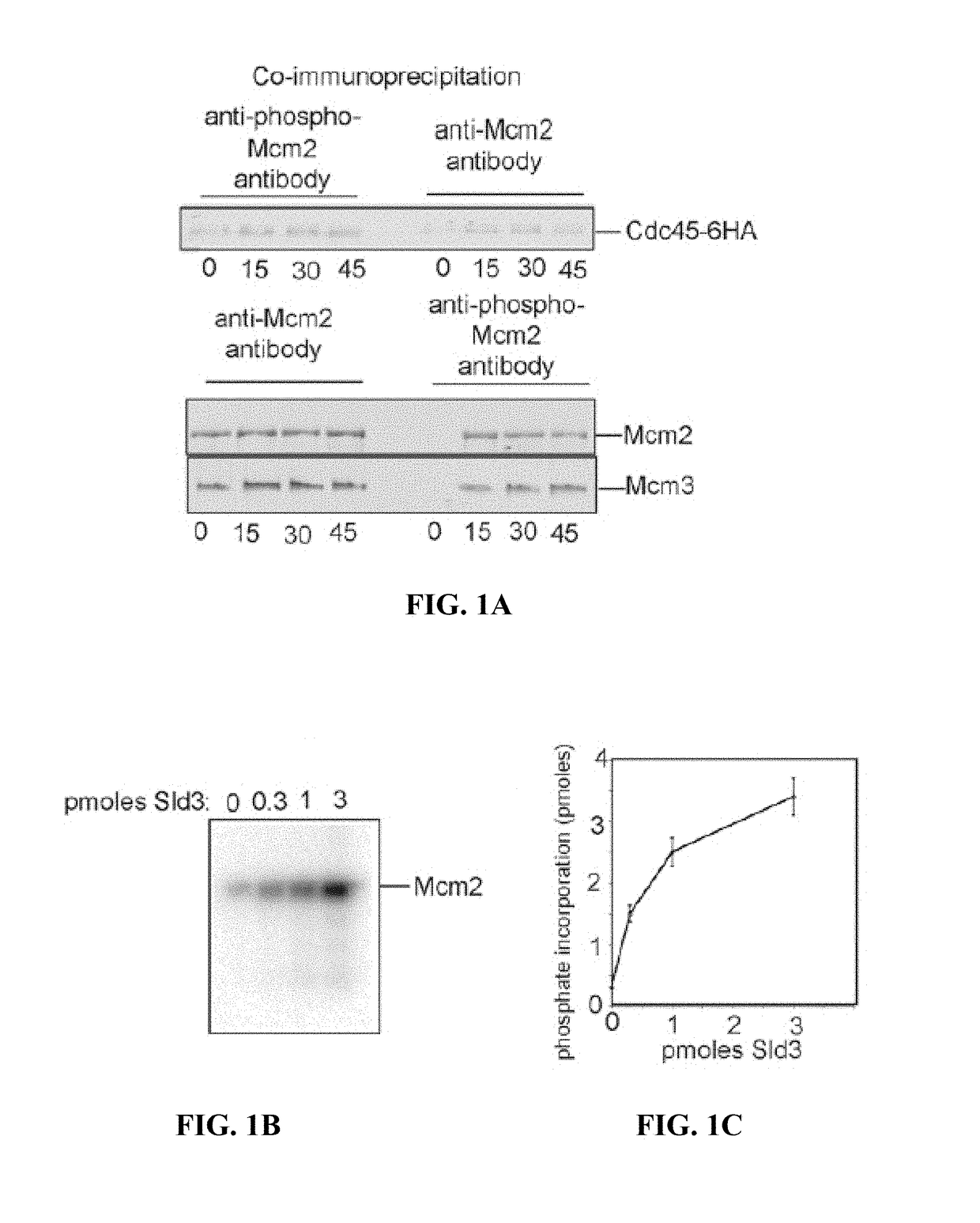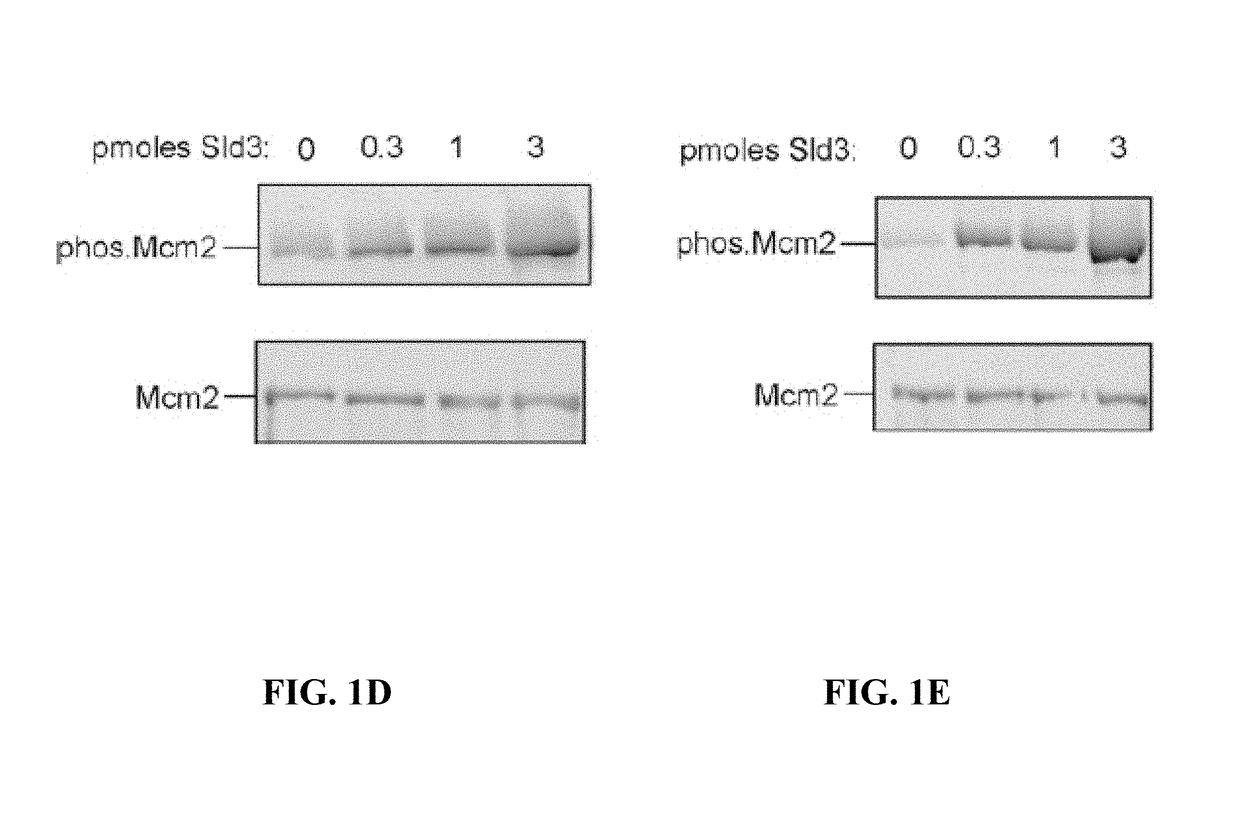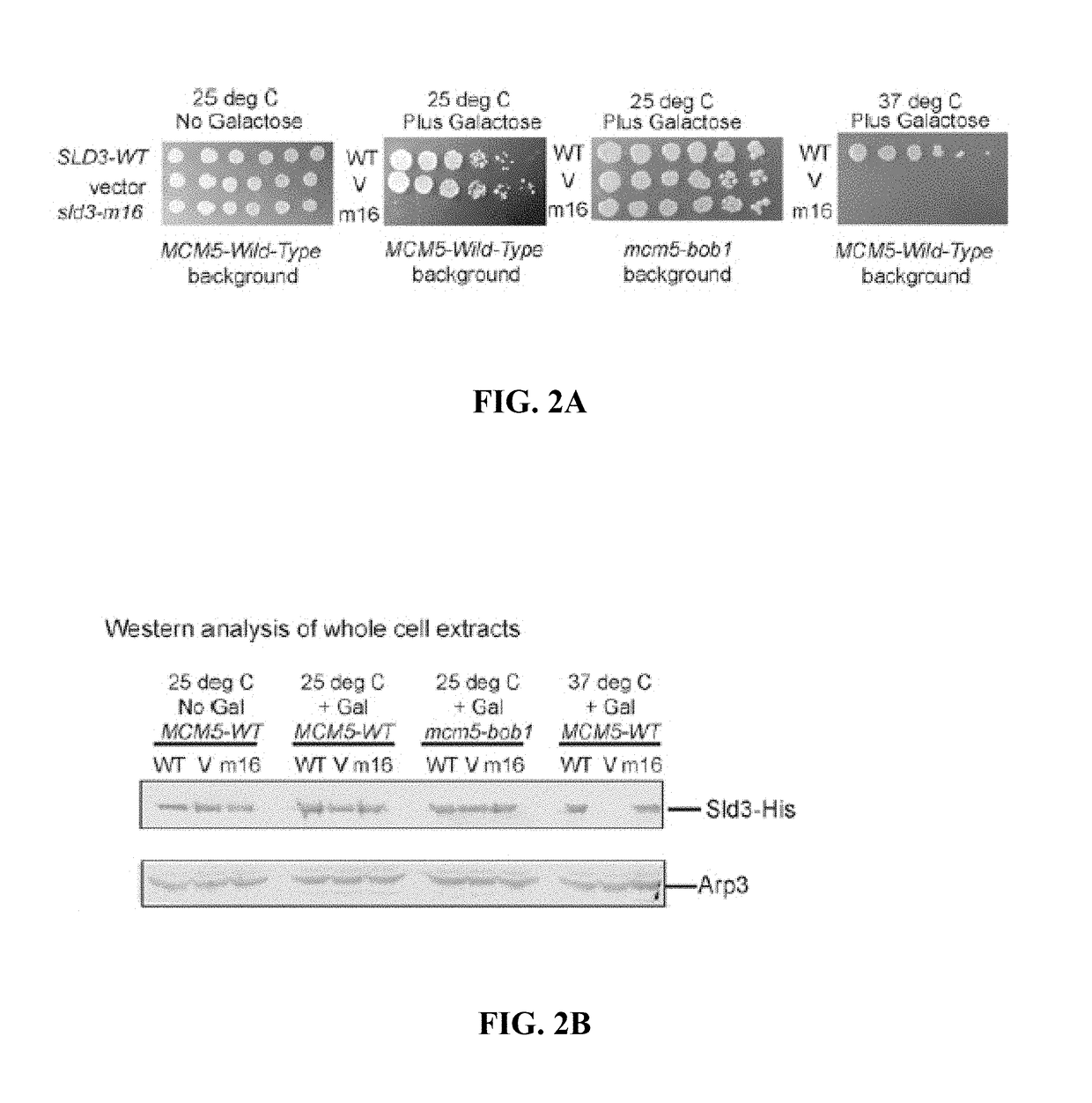Detection of elevated levels of phosphorylated MCM and method of increasing MCM phosphorylation capacity
a phosphorylation capacity and mcm technology, applied in the field of specific antibody-based screening assays for colorectal cancer, can solve the problems of few inhibitors that target replication initiation, lack of ki67 inhibitors, and inability to detect side effects, so as to increase the phosphorylation capacity of mcm, and increase the phosphorylation capacity
- Summary
- Abstract
- Description
- Claims
- Application Information
AI Technical Summary
Benefits of technology
Problems solved by technology
Method used
Image
Examples
example 1
[0103]The replication fork helicase unwinds double-stranded DNA at a replication fork, and assembly and activation of this helicase are tightly controlled. Described herein is a biological mechanism to link two essential functions related to helicase assembly and activation. Sld3, a protein required for initiation of DNA replication, coordinates the assembly of the replication fork helicase with the chemical modification of a helicase protein subunit. This chemical modification is important for subsequent activation of the helicase.
[0104]DDK phosphorylates Mcm2 during S phase in yeast, and Sld3 recruits Cdc45 to Mcm2-7. DDK-phosphoryled-Mcm2 is shown herein to preferentially interact with Cdc45 in vivo, and Sld3 stimulates DDK phosphorylation of Mcm2 by 11-fold. A mutation of Sld3, Sld3-m16, was identified to be specifically defective in stimulating DDK phosphorylation of Mcm2. Wild-type expression levels of sld3-m16 result in severe growth and DNA replication defects. Cells express...
example 2
[0168]HCT116 colorectal cancer and normal cells was tested for the expression of Mcm2 and DDK-phosphorylated Mcm2 (Mcm2-S53P) (FIG. 6). The current antibody that recognizes DDK-phosphorylated Mcm2 was found to produce a clear signal by Western analysis of whole cell extracts. Furthermore, a higher signal for Mcm2-S53P was found in colorectal cancer cells compared to normal cells (FIG. 6). These data suggest that this antibody is useful to detect cancer. Levels of Mcm2 were also examined, and it was found that while cancer cells expressed higher levels of Mcm2 compared to normal cells, the signal ratio (cancer cells / normal cells) was substantially higher for Mcm2-S53P compared to Mcm2 (FIG. 6). These data suggest that Mcm2-S53P can predict cancer with higher specificity compared to Mcm2, and Mcm2 is already a proven standard in the field.
[0169]Glossary of Claim Terms
[0170]Administer: This term is used herein to refer to the process by which purified Treslin or a composition comprisin...
PUM
| Property | Measurement | Unit |
|---|---|---|
| volume | aaaaa | aaaaa |
| pH | aaaaa | aaaaa |
| restrictive temperature | aaaaa | aaaaa |
Abstract
Description
Claims
Application Information
 Login to View More
Login to View More - R&D
- Intellectual Property
- Life Sciences
- Materials
- Tech Scout
- Unparalleled Data Quality
- Higher Quality Content
- 60% Fewer Hallucinations
Browse by: Latest US Patents, China's latest patents, Technical Efficacy Thesaurus, Application Domain, Technology Topic, Popular Technical Reports.
© 2025 PatSnap. All rights reserved.Legal|Privacy policy|Modern Slavery Act Transparency Statement|Sitemap|About US| Contact US: help@patsnap.com



